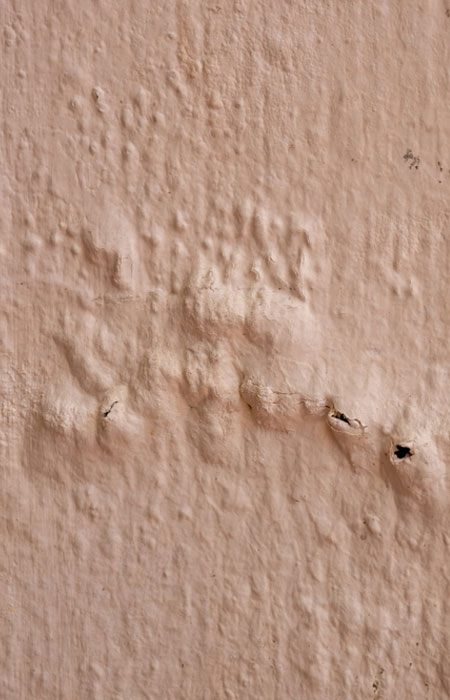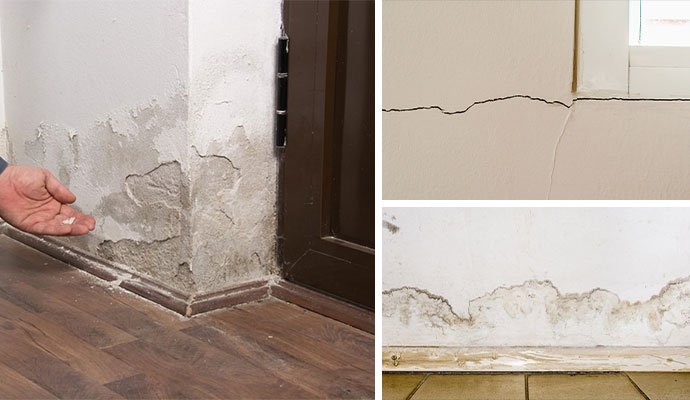What're your opinions on Indicators of Water Damage Behind Walls?

Water discolorations on wall surfaces are not positive to the eyes. Your residence must be without spots on the walls, roofing system, or floorings. That is the suitable state of a home and also its frameworks. Often it seems virtually unpreventable to experience water spots on walls in residences.
House owners living in moist regions constantly take care of the worry of water discolorations on wall surfaces. But that does not need to be the case for you. With accurate as well as all-around details on the root causes of water stains and also timely fixing procedures, you will constantly be a step ahead of such events. So, this short article assures to be a valuable guide for you.
3 Common Sources Of Water Stains on Wall Surfaces
Unlike common belief, water stains on walls do not constantly originate from poor building products. There are numerous sources of water discolorations on walls. These include:
Poor Drainage
When making a building strategy, it is critical to make sure ample drainage. This will certainly protect against water from seeping into the walls. Where the drain system is obstructed or nonexistent, underground moisture develops. This links to extreme dampness that you observe on the wall surfaces of your structure.
So, the leading cause of damp wall surfaces, in this instance, can be an inadequate water drainage system. It can also be due to poor monitoring of sewer pipelines that run through the building.
Damp
When hot moist air meets completely dry chilly air, it triggers water droplets to form on the walls of structures. When there is heavy steam from cooking or showers, this happens in shower rooms as well as kitchen areas. The water droplets can discolor the surrounding walls in these parts of your home and also infect various other locations.
Wet or condensation impacts the roofing system and wall surfaces of buildings. When the wall surface is damp, it creates an ideal atmosphere for the growth of fungi and also microorganisms.
Pipeline Leaks
A lot of homes have a network of pipes within the walls. This ensures that the pipelines are well away from the reach of devastating rodents. It constantly boosts the viability of such pipelines, as there is little oxygen within the walls. This inhibits rust.
Yet, a drawback to this is that water leak affects the wall surfaces of the building and also causes extensive damage. An indicator of faulty pipes is the look of a water tarnish on the wall surface.
Water Spots on Wall Surface: Repair Work Tips
Homeowners would normally want a quick fix when taking care of water stains. Yet, they would certainly soon recognize this is counterproductive as the water spots reoccur. So, below are a few handy suggestions that will certainly guide you in the repair service of water discolorations on walls:
- Constantly fix the reason for water spots on wall surfaces
- Engage the assistance of specialist fixing solutions
- Technique regular sanitation and clean out blocked sewage systems
- When developing a home in a water logged location, make certain that the employees perform correct grading
- Tiling areas that are prone to high condensation, such as the kitchen and bathroom, assists in minimizing the accumulation of moist
- Dehumidifiers are additionally handy in maintaining the wetness levels at bay
Pro Idea
A houseplant in your house likewise boosts its moisture. If the home is already humid, you may want to introduce houseplants with very little transpiration. An example of appropriate houseplants is succulents.
Verdict
No one wants to have water spots on walls in their house, it can occur to the finest of us. This post provides you utilize, as you currently recognize just how to manage this incident if it does take place.
It is constantly best to hire expert solutions to assist take care of the damages in your home.
In some cases it seems practically unavoidable to experience water stains on walls in homes.
In contrast to preferred idea, water discolorations on wall surfaces do not always stem from bad building materials. There are several reasons of water discolorations on wall surfaces. The water beads can discolor the surrounding walls in these components of your residence and also spread to various other areas.
Here are a few helpful pointers that will certainly assist you in the repair service of water spots on walls:
How to Remove Water Stains From Your Walls Without Repainting
The easy way to get water stains off walls
Water stains aren’t going to appear on tile; they need a more absorbent surface, which is why they show up on bare walls. Since your walls are probably painted, this presents a problem: How can you wash a wall without damaging it and risk needing to repait the entire room?
According to Igloo Surfaces, you should start gently and only increase the intensity of your cleaning methods if basic remedies don’t get the job done. Start with a simple solution of dish soap and warm water, at a ratio of about one to two. Use a cloth dipped in the mixture to apply the soapy water to your stain. Gently rub it in from the top down, then rinse with plain water and dry thoroughly with a hair dryer on a cool setting.
If that doesn’t work, fill a spray bottle with a mixture of vinegar, lemon juice, and baking soda. Shake it up and spray it on the stain. Leave it for about an hour, then use a damp cloth to rub it away. You may have to repeat this process a few times to get the stain all the way out, so do this when you have time for multiple hour-long soaking intervals.
How to get water stains out of wood
Maybe you have wood paneling or cabinets that are looking grody from water stains too, whether in your kitchen or bathroom. Per Better Homes and Gardens, you have a few options for removing water marks on your wooden surfaces.
- You can let mayonnaise sit on your stain overnight, then wipe it away in the morning and polish your wood afterward.
- You can also mix equal parts vinegar and olive oil and apply to the stain with a cloth, wiping in the direction of the grain until the stain disappears. Afterward, wipe the surface down with a clean, dry cloth.
- Try placing an iron on a low heat setting over a cloth on top of the stain. Press it down for a few seconds and remove it to see if the stain is letting up, then try again until you’re satisfied. (Be advised that this works best for still-damp stains.)
https://lifehacker.com/how-to-remove-water-stains-from-your-walls-without-repa-1849742925

Do you really like more info about How to Remove Water Stains from Walls and Ceilings? Post feedback below. We will be delighted to see your views about this blog entry. Hoping that you visit us again in the future. Appreciated our post? Please share it. Let other people discover it. Thanks a bunch for your time. Please check our blog back soon.
Schedule A Service
Comments on “Erase The Trace - Identifying And Repairing Water Stains On Walls”